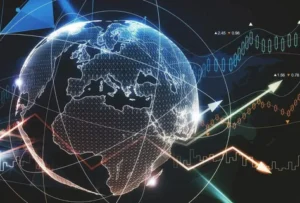A multitude of factors, including China’s economic policies, Trump’s energy policy, OPEC initiatives, geopolitical conflicts, and the worldwide transition to renewable energy, are expected to impact crude oil prices in 2025. Because of the lingering cloud of uncertainty, the market has not broken out of its range. Is 2025 going to be the year everything falls into place?
Key Events:
- OPEC and IEA Divergent Forecasts
- China’s Monetary Policies and Demand Potential
- Geopolitical reformations and risk premiums
- Trump’s Drill baby Drill Agenda
- Clean Energy Transitions
OPEC Cuts 2024-2025 Oil Demand Forecasts
OPEC lowered its oil demand predictions for 2024 and 2025 for the fifth year in a row, citing concerns about Economic and Geopolitical development in important regions like China. The group’s decision to extend output cuts in June prompted this biggest revision to date. Estimates for 2024 and 2025 saw decreases, with the former falling from 1.82 million bpd to 1.61 million bpd and the latter from 1.54 million bpd to 1.45 million bpd. Despite these curbs, we expect increased output from non-OPEC members to propel the global oil market back to a surplus in 2025.
Oil consumption is expected to increase from 840,000 bpd in 2024 to 1.1 million bpd in 2025, reaching a total of 103.9 million bpd, according to the IEA’s predictions for rapid demand growth. The demand for transport fuel is still falling behind that of petrochemical feedstocks as a result of both technology and consumer behavior changes.
The market remains in a range-bound consolidation period due to the uncertainty surrounding oil prices, which are emphasized by the conflicting estimates from OPEC and the IEA. The longer this continues, the more likely it is that a bullish or bearish breakout will occur with increasing force and clarity.
China to Introduce Loose Monetary Policy in 2025

In 2025, China will introduce a “moderately loose” monetary policy, which will be its first in 14 years. The last instance of this approach occurred during the 2008–2009 financial crisis, when China stimulated its economy through interest rate cuts, reserve requirement reductions, and increased fiscal spending. In 2011, China scaled back these measures to mitigate bubble risks, but they spurred rapid credit expansion, Economic and Geopolitical Shifts growth, and inflation.
Although the details of China’s 2025 policy are still unknown, analysts anticipate a similarly aggressive response to potential trade conflicts under Trump’s administration. If successful, this stimulus could significantly boost oil demand and shift forecasts to the upside. But not having the desired effect on the economy and the risk of an oversupply from non-OPEC producers in 2025 could add a lot of bearish pressure.
Trump’s “Drill Baby Drill” Agenda
The “Drill Baby Drill” initiative by Trump and the 3-3-3 plan by Treasury Secretary Bessant are likely to put oil overproduction risks front and center in 2025. A three million barrel increase in oil production, a three percent increase in GDP, and a three percent decrease in the budget deficit are the goals of the plan. Because of this excess approach, the OPEC+ nations will have a harder time reversing the voluntary reductions in supply that they started in 2022. Opec and its allies decided to prolong the cutbacks until April 2025 in an effort to stabilise the market. However, the continued decline in demand predictions, exacerbated by China’s Economic and Geopolitical Shifts slowdown, shows that there are still problems.
SUmmary
The latest research from the IEA predicts that by 2030, the worldwide market for clean technologies, such as solar PV, wind turbines, electric vehicles, batteries, electrolysers, and heat pumps, would have tripled in size, reaching over $2 trillion. This dramatic increase in the use of renewable energy sources is casting doubt on future predictions of oil consumptionEconomic and Geopolitical Shifts pessimism. Opponents of renewable energy point to their negative effects on the environment and their inefficiency, arguing that oil will always have a position in the world’s energy mix. These divergent opinions bear out the volatility of oil prices.
[sp_easyaccordion id=”3460″]

